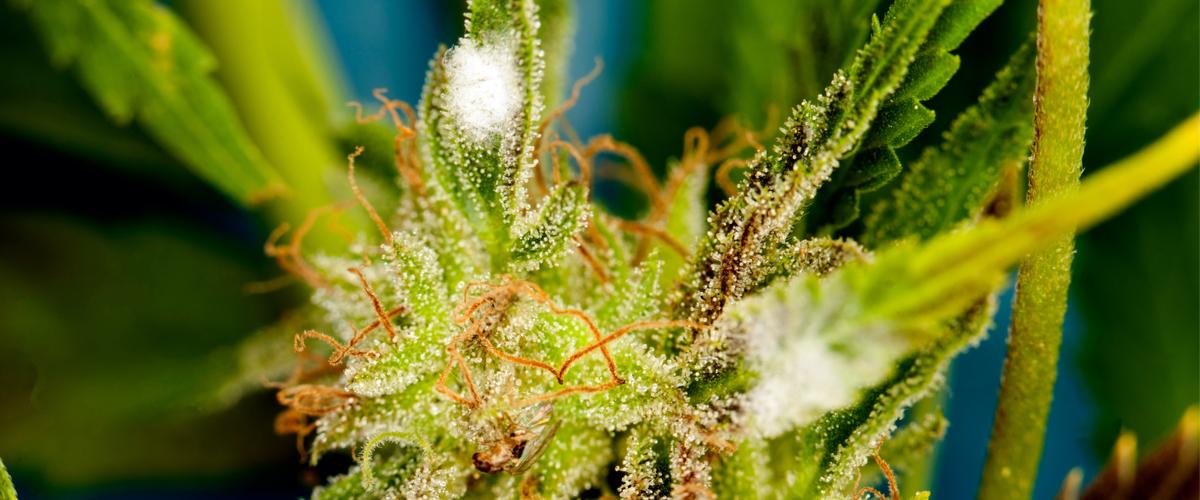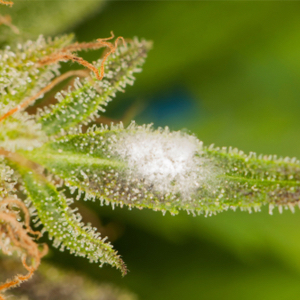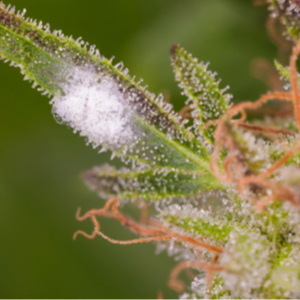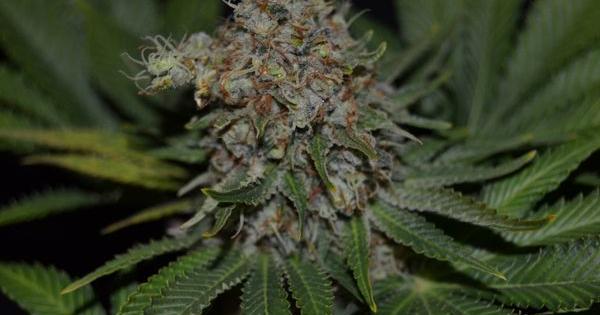- Watching your cannabis plants in full bloom is a true delight for the senses. As time goes by, their amazing flowers keep growing until harvest time draws near.
- But this phase isn’t exempt from trouble, so you need to keep a close eye on everything to ensure that all your hard work doesn’t get ruined.
- In this post we’ll have a look at a series of preventive measures that you should take into consideration to safeguard your cannabis grow until harvest time.

There's an old saying that's widely used by veteran wine growers in the region of Bordeaux, who are always worried about the success of their annual harvest, that says: "Nous serons tranquille, une fois que tout sera dedans!" ("We'll sleep tight once everything's in the sack!"). This means that they won't rest easy until harvest time is over and the fruit of their labour is stored in a safe place.
This very same thing happens with marijuana growing. There's a real risk that all or part of the cannabis crop may get lost on the way. Everything's possible from the very moment that the plants anchor their roots in the soil following nature's lead.
Issues may vary depending on the type of cannabis seed that's being grown. Most problems are connected to high humidity levels, and include the appearance of fungi (botrytis, mildew, or powdery mildew), mainly caused by excessive watering or by the seed's susceptibility to fungal attacks.
Another factor that may have a negative impact on cannabis growing is night light pollution, which can disrupt the flowering or stop the plants from blooming altogether. Not all growers are aware of this but it is something that affects many outdoor grows.
In addition, there's the risk that mushroom pickers, hunters, or malicious people may come across your beloved plants and decide to take them without the slightest consideration for all the hard work you've put in over the previous months.
Recommended preventive measures for the period prior to harvest
Seasoned growers know that the phase prior to harvest is extremely delicate, as it may entail a series of specific factors that can lead to bad results, which is something that must be avoided at all costs considering all the effort that goes into the full growth cycle of the plants. This is why it's essential to avoid any situation that may compromise the success of the crop.
Humidity and the risk of the appearance of botrytis, mildew, or powdery mildew
Rain usually appears gradually in most European regions from early September, when temperatures also start to drop.
Botrytis, mildew and powdery mildew are the pathogens that attack cannabis plants most often during the phase prior to harvest. With the arrival of autumn, air humidity levels increase and temperatures drop. There are usually some significant weather shifts, with strong temperature changes in some areas, which can range from extremely cold to extremely hot, and with high levels of humidity. These are precisely the perfect conditions for these 3 fungi to sprout…

The spores of these fungi spread over the plants, where they develop, thereby damaging the deliciously perfumed flowers until they're completely destroyed.
You must follow these simple steps to win this hard battle against disease: apply 1 ml root stimulator once a week to strengthen the plants' immune system, even during the last few weeks of growth. Water moderately and give your plants just the right amount of nutrient solution, without overdoing it.
If you water your plants in excess when the air humidity level is high, the risk of fungi will increase significantly, so you need to pay special attention to this point.
If you're growing in pots and the size and number of plants allows you to move them indoors for an overnight stay, don't hesitate to do so as this is a great way of minimising the appearance of fungi as well as plant theft.
If the plants are planted directly in the soil, we advise you to eliminate the moisture they've accumulated overnight by shaking them lightly. To eliminate this excess water you need to hold the main stem between your index and your middle finger and carefully shake the plant structure with a horizontal movement of approximately 2 cm from left to right.
You need to know your strain well before you grow it and especially to have a good knowledge of its level of resistance. Not all genetics have the good fortune of being capable of facing fungal infections. Indica-dominant cannabis strains, for instance, tend to be more sensitive with regards to fungi.
You need to watch your plants closely each day during the last few weeks, because mould might not be visible to the naked eye but may end up seriously damaging the plants. A really practical tip is to harvest little by little, even several times on the same plant, as the flowers mature.

If a plant has dense and compact buds that are ready for harvest on the top part, don't take any unnecessary risks: cut them even if the surrounding or lower flowers aren't ready yet. You can leave the rest for later…
Do the same with all plants. This is an effective way of protecting your crop and preventing the emergence of any issues. If you have many plants but can dedicate time to them every day, feel free to gradually collect the flowers that have already matured.
If your crop is a guerrilla grow in the middle of the countryside, this may not be a good option for you as it's best to harvest all the plants in a single day for security reasons. In this case it's paramount to know what the perfect harvest time is…
Issues related to excess humidity appear according to VPD (Vapour Pressure Deficit) control and management, which proves extremely hard when growing outdoors, or even in greenhouses.
VPD is the difference between the humidity level found in the air and the humidity level that the air has when it's saturated, during which time water condenses into dew, a mist, or a water layer on the leaves.
The big issue with marijuana flowers is that their spongy texture and their varying density facilitate the absorption of moisture, which makes them the perfect target for these 3 pathogens. Night-time is often their favourite time of the day as that's when humidity drastically increases due to the lack of light and to a drop in temperature.
Not all strains behave in the same way, and certain genetics are hardier than others. Adverse climate conditions can also be detrimental. These may include an earlier than usual autumn season, heavy rainfalls, and cold and dark days. This is definitely not the most appropriate scenario for marijuana cultivation, but rather the opposite, so if you find yourself in this situation we advise you not to wait any longer and try to harvest as soon as possible, if you have the chance.
Light pollution
You need to be very aware of the lighting around your crop during the phase prior to harvest. If your outdoor grow is being repeatedly illuminated by a powerful external light source, this could have a negative impact on the flowering phase of your plants.
Make sure there are no lights near your grow at night. This could cause the flowering phase to stop, as the plants could interpret the light as a return to the vegetative phase.
You also need to watch out for street and surrounding lights within 100 metres of your crop, as these could jeopardise the flowering of the plants.
This problem only affects feminised and Quick cannabis strains, as they're both photo-dependent. The autoflowering varieties are exempt from this as they flower automatically regardless of the photoperiod or the surrounding lighting.
Theft of outdoor cannabis crops
The number 1 golden rule to protect your outdoor marijuana grow is discretion. Only mention and show your 'secret garden' to those people that you fully trust. We know from experience that this type of grow tends to attract some ill-intentioned people who have no problem stealing the possessions of others.
If you've got a guerrilla grow in the middle of nature, you'll have to act with great discretion. Try to reduce your journeys to the grow site to a bare minimum so you don't call any attention to yourself in the surroundings. Whether for watering or for harvesting during the final phase, try to optimise the effectiveness of each situation and limit your visits. In this situation it's best to harvest in just one go.
If you're growing at home, pay attention too! Keep in mind that there will be tell-tale signs in the days before harvest … The plants will probably release potent and enticing scents that may be detected by the very last person who should be smelling them!

Depending on the strain and the phenotype, it is possible for some plants to be seen from the street or from other locations in the neighbourhood. Ill-intentioned neighbours may be eager to steal the fruits of your hard labour or may feel the need to perform a supposedly civic act and inform the authorities. Best to think ahead and anticipate this type of situation to avoid any unexpected surprises.
It is best to stay close to your crop during this last phase or, if you're unable to do so, to rely on someone you can trust to do it for you. We don't encourage anyone to resort to violence or to have confrontations with third parties, but your very presence could be enough to drive away those people who could be thinking of taking what's yours.
Unfortunately, there's been an emergence of criminal groups specialising in this type of theft in the last few years. They dedicate themselves to studying the growers' schedules, and then taking advantage of their absence to steal the fruits of their labour. Keep an eye out for any suspicious or unusual activity in the area around your grow, as this can often be a warning sign of something to come. Keep a sharp eye out! Every small detail could be vital.
Recap on the preventive measures to keep in mind
- Find out about the date of harvest and the level of endurance of your chosen strains.
- Water just enough to limit the humidity level of the plants during the final 3-4 weeks.
- Apply a root stimulator once a week to reinforce their immune system.
- Protect the plants at night during at least the last 2 or 3 weeks (when growing in pots).
- Keep a close eye on your plants during the last few weeks (point of maturation, possible appearance of pathogens like mildew, botrytis, powdery mildew, etc.).
- Conditions permitting, harvest gradually in instalments as the flowers ripen (only applicable to home grows).
- In the case of guerrilla grows, choose the right harvesting time and do it all at once for security reasons.
- In the mornings, eliminate excess water that might have accumulated on the plants overnight.
- Get rid of all the flowers affected by mould (as they are unfit for consumption).
- Keep any light source away from the grow space (100 metres away at the very least).
- To prevent theft, be very discreet, especially at harvest time.




Comments from our readers
There are no comments yet. Would you like to be the first?
Leave a comment!Did you like this post?
Your opinion about our seeds is very important to us and can help other users a lot (your email address won't be made public).